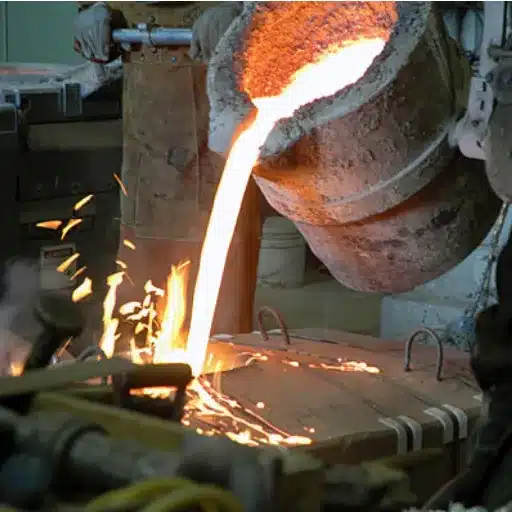Navigating the world of pipe systems can pose a challenge with terminology that is unfamiliar to beginners, often resulting in confusion. Words like “couplings” and “fittings” are often mixed up, which brings uncertainty about their differences and application. Are they that different? Everyone working in plumbing, construction, or industrial engineering should have knowledge of the different roles these components play. This article investigates the differences between fittings and couplings in regard to their functions, applications, and contributions to the effective design of piping systems. You will appreciate the importance of these components and how they help strengthen and make piping systems durable and dependable.
What Are the Different Types of Pipe Fittings?
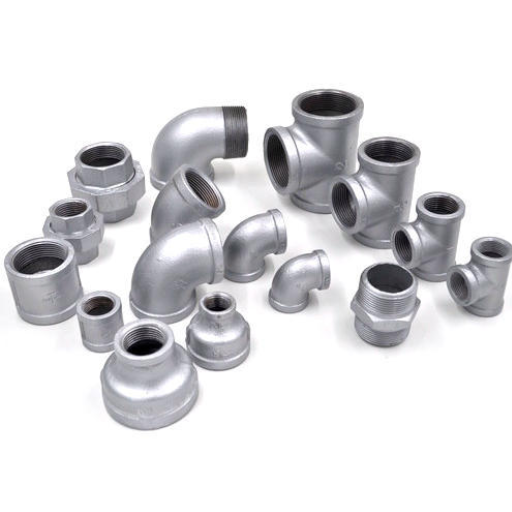
All pipe fitting options are tailored for specific purposes; whether it is to connect pipes, redirect the flow, or secure a pipe within a certain system. Common ‘types’ of pipe fittings can include:
- Elbows: These fittings are intended to change the direction of flow in a piping system by either 45 or 90 degrees. Elbows are employed both at homes and in industries as they provide freedom in spacing the piping network. They are made from durable materials like stainless steel which grade, PVC plastic, or copper piping, and as such are compatible with various plumbing materials.
- Tees: Tee fittings make branch cuts for dividing flow or joining two flows into one stream at a central part of a piping system. It can either be in a T shape or a Y shape, which is widely used in water supplies or irrigation systems.
- Flanges: Apart from their use as important fastening elements in a piping system, flanges serve the dual purpose of readily joining and disengaging pipes. With flanges, one is able to hold two pipes in position using bolts while the ends are tightened with breathers in leak holes, with a seal that can be fitted to prevent leakage. They are common in high-pressure and corrosive systems because of their strength.
- Crosses: Known as four-way fittings, cross fittings allow joining the ends of four different pipes. These are mostly used for automatic fire extinguishers and other manufacturing systems with complicated branching. It has a high symmetrical axis, which decentralizes liquids and gases.
- Valves: Even though they are not fittings, valves have a critical function in piping systems. Valves have the responsibility of regulating the flow and controlling the liquid in a comprehensive way. The most common examples are Ball Valves, Gate Valves, and Check Valves, all of which operate at certain pressure levels. A ball valve is perfect for situations requiring on/off control, and check valves prevent backflow.
These modern piping fittings demonstrate the creativity and flexibility incorporated into their design. Choosing the right type considering the flow conditions, pressure, and the materials used guarantees safety, efficiency, and durability in everything from home plumbing systems to sophisticated industrial systems. As noted by recent data, increased innovation in fitting design is improving ease of installation and operational reliability, addressing the need for sustainable infrastructure.
Types of Pipe Fittings: A Comprehensive Overview
Pipe fittings have a wide range of shapes and sizes that serve a distinct purpose in plumbing and industrial processes. Some of their basic functions are connecting pipes, changing the direction of flow, controlling flow, and sealing systems for leak-proof operations. Below is an overview of some common types of pipe fittings and their applications:
- Elbows: Change the Flow Direction of Fluids in a System. Most commonly are at 45-degree or 90 90-degree angles. Applications can be residential plumbing or industrial pipelines because of the compact systems that are crucial.
- Tees: Allow for Auxiliary Pipeline Branching, to create a 3 3-way connection. Available in Equal and Undesired Proportions. Provides a good, equal solution for distributing fluids within different systems.
- Couplings and Unions: Couplings provide a permanent bond between 2 pipes, while unions provide a detachable bond for easier maintenance and replacement of pipes. Advanced designs of couplings now offer resistance to corrosion and high temperatures.
- Flanges: Used to connect two pieces of equipment or pipelines. Flat circular pieces are bolted to each equipment to be joined. They connect 2 parts of devices assembled, such as a piping system. Recent studies show stainless steel and composite flanges are on the rise due to their durability and high temperature/pressure resistance.
- Reducers: Allow joining of pipes with different diameters. Very essential for meeting the required frame of the system in place and the fluid flow rate, and the rate of fluid transfer. Usually produced in concentric and eccentric forms, depending on the application needs.
Materials and Innovations in Pipe Fittings
For their strength, durability, and resistance to particular environmental factors, pipe fittings are made from various materials such as stainless steel, PVC, copper, and cast iron. Reports show that stainless-steel pipe fittings have recently become more popular in the food processing and pharmaceutical industry due to strict hygienic requirements and the need for corrosion-resistant materials.
Equally important is the fact that innovation, such as grooved or push-fit fittings, has accelerated the efficiency of installation by reducing the time and skill level needed, while simultaneously improving the trustworthiness of the joints. An example of this is the push-fit fittings, which can be used for residential projects since they do not require any tools for fitting, making installation very straightforward.
Sustainable design and eco-friendly materials are being developed for pipe fittings, which contributes to sustainable construction on a global scale. Such development reduces damage to the environment while improving system effectiveness as well as performance over time.
Understanding Elbow Fittings and Their Uses
Standard geometry elbow fittings are very important parts of piping systems intended to change the direction of flow of liquids, gases, or other materials at certain angles, usually 45 degrees, 90 degrees, or 180 degrees. All of these changes need to be taken into account for proper flow direction in a system and pipe-jointing shape arrangements. These fittings are made of materials such as copper, stainless steel, brass, and PVC. They are manufactured elbow fittings are used for a wide range of applications, from plumbing in homes to industrial pipelines.
Recent analyses show that the expanding construction projects are accompanied by advancements in fluid transport technologies, increasing the need for high-quality elbow fittings. For example, the global market for pipe fittings was estimated to be worth ~$15.8 bn in 2022, with an approximate annual increase of 4% until 2030. This attaches more importance to the modern infrastructural needs and the efficient and durable fittings required, which include elbow connectors.
Innovative adjustable elbow fittings are designed in different styles, including long and short radius styles, to suit different uses. Long radius elbows minimize pressure drops and turbulence, which is ideal for smooth flow scenarios, while short radius elbows are ideal for scenarios where space is limited. Knowing these differences helps in making the right choice of elbow fitting to maximize system performance and increase lifespan.
How Do Couplings and Fittings Connect Pipes?
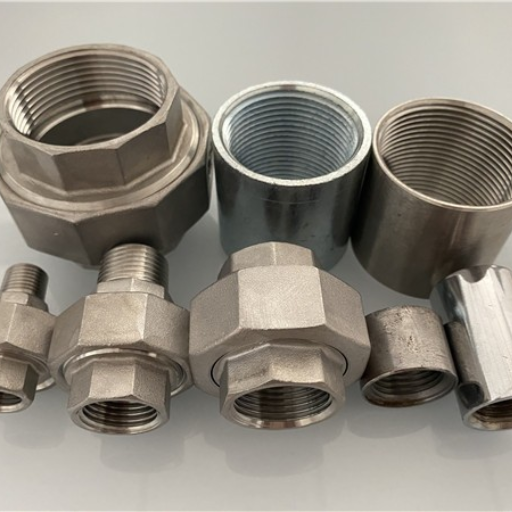
A coupling makes a form joining two straight pipes into one single pipe, while fittings and adapters are included to change the size of the pipe, thus, couplings and fittings join pipes together. Adder fittings can change the axis of directional or even the size of the bore of a piping system. Both Tools are vital to make sure that all piping systems are properly constructed and efficiently reliable so that the tools that are being used can work as intended.
What is a Pipe Coupling and its Function?
There are different types of pipe couplings because each type serves specific purposes in a piping system. The most frequently found types consist of:
- Full Couplings – These couplings are used with two pipes of the same dimension. They join the two pipes between themselves tightly and without leaking. Full couplings are often used in industrial applications that require reliability.
- Half Couplings – Proper for the case where a coupling is needed on only one side of the pipe and is used mostly in systems where branch connections are utilized.
- Reducing Couplings – These are applied in the joining of pipes of different diameters, allowing for seamless changes of the flow and pressure between various sizes of piping.
- Slip Couplings – Used in cases where a section of a pipe has to be done away with, Slip Couplings permit shifts within a reasonably wide scope and are flexible when it comes to repairs.
- Compression Couplings – Used widely in systems that need disassembly for maintenance work, this kind of coupling allows joining of the pipes without threading or gluing, and so, the pipe can be easily attached and detached when needed.
Couplings are designed to withstand high pressure and temperature, as well as corrosive elements, depending on the application field—plumbing, automotive, oil and gas, or chemicals. Triangular-shaped pipe couplings made from stainless steel, PVC, or reinforced plastics improve with each passing day due to innovation, which offers high ease of use during severe conditions.
Advantages of Pipe Couplings in Piping Systems
Pipe couplings are essential for ensuring the efficiency and dependability of piping systems. They assist with sealing performance so that there are no leaks, reducing downtime during maintenance, and making expansion or changes to the system straightforward. Couplings also help preserve system flow, which decreases losses of energy and increases operational efficiency. This shows that couplings are highly critical components in today’s piping systems.
How to Use Union Fittings to Connect Two Pipes
Union fittings provide a simple and effective way to join two pipes since they provide ease during construction, deconstruction, and maintenance without cutting or damaging the pipes. Here is a complete guide on how to use union fittings:
- Prepare the Pipes: To start, make sure the ends of the pipes are clean, smooth, and devoid of any dirt, rust, or other obstructions. A clean surface meets the pipes adhesion and guarantees no leaks.
- Measure and Select the Right Fitting: Select a union that has the same diameter and material type as your pipes. For example, confirm that PVC, copper, or steel materials do not form galvanic corrosion.
- Apply Sealant or Teflon Tape: Prior to uniting them, Teflon tape should be placed around the pipe end threads, or a strong sealant applied, to ensure the connection holds and the joint does not leak.
- Attach the Fitting Components:
-
-
- Detach the union nut from the union fitting, to the nut, female end and male end.
- Tightly fasten the male and female ends to the pipes. Ensure they secure either by threads or soldering, depending on the fitting type.
-
- Align and Tighten:
-
-
- Assemble the male and female ends of the fitting. Ensure the pipes are in the correct alignment.
-
Position the union nut over the fitting interface and use an adjustable wrench to tighten. Exercise caution to avoid excessive tightening, which risks damaging the fitting or pipe threads.
-
- Test for Leaks:
-
-
- After completing the connection, allow gas or liquid to run through the system at a low pressure in order to identify any possible leaks.
-
In case of a leak occurrence, the sealant needs to be reapplied or the fittings need to be readjusted tightly.
-
Materials and Efficiency Statistics
Union fittings are incredibly useful and come in brass, stainless steel, plastic, and galvanized steel, so they can be used practically anywhere. Studies have shown that union fittings save up to 40% of the time required on installations when compared to other joining methods, which makes it very favorable economically. Also, these fittings can be easily maintained, with most systems experiencing a 30% reduction in repair downtime because of the ease of disassembly.
Employing the union fittings technique along with these steps guarantees a stable, efficient, and lasting connection on pipes in residential, commercial, and industrial applications.
Pipe Thread: Ensuring a Tight Connection
Pipe threads play an important role in the reliability and efficacy of piping systems because of the connection they provide as being leak-proof. The very threads are designed to seal under pressure and can be found in many industries like plumbing and oil, and gas operations.
The threads on pipes are of two major types: parallel (straight) threads and tapered threads. An example of tapered threads would be National Pipe Tapered (NPT) threads. These threads are made to exert greater seal under torque. According to a study, reinforced NPT threads are estimated to sustain pressures up to 10000 psi, which is highly dependent on the material and application.
Utilization of thread sealants for the achievement of optimal performance, like PTFE tape or liquid thread sealant, is crucial. These materials effectively make a difference by filling minor imperfections within the threads and thus reducing the risk of leakage. Research indicates that PTFE tape would be suitable for temperatures lower than -268°C, exceeding (+260°C) and pressure as high as 55 bar, thus making it a versatile option.
Flexibility across systems is also provided through the set of standards. For example, British Standard Pipe (BSP) threads are internationally known, even though BSP threads are common in North America. Knowing the correct types of threads and understanding the differences of each type aids in connection issues, which is helpful in ensuring operational safety.
As part of proactive maintenance, threaded connections undergo a scheduled inspection, especially in demanding settings where stress is high. Periodic maintenance checks are essential due to factors like misalignment and wear, which help in avoiding costly breakdowns. Applying modern threaded technology design principles coupled with compliance to industry standards provides systems with efficiency and reliability across varying applications.
What Are the Key Differences Between Couplings and Fittings?
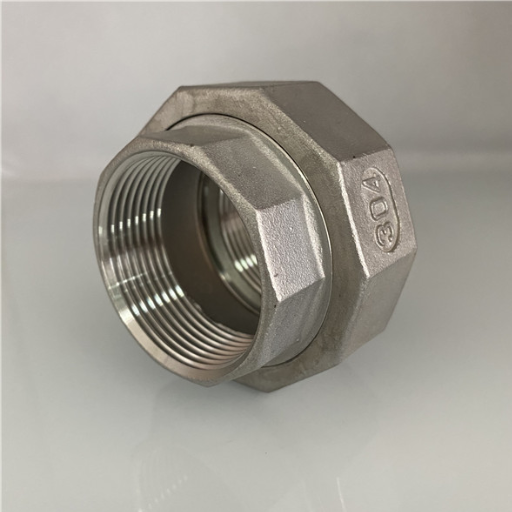
Both couplings and fittings are utilized to join components in specific systems; however, their functions vary:
- Mechanically, a coupling is used to connect two shafts or pipes with the intention of transmitting power or a fluid through them while maintaining alignment and continuity. This is common in pipelines and other mechanical systems.
-
Plumbing fittings are used to connect, change the direction, or end the flow of pipes and tubing. They commonly make changes in direction, size, and flow control within a system.
The difference comes in their applications: couplings are mainly concerned with the joining for transmission or alignment, while fittings focus more on controlling or directing flow within piping systems.
Defining Couplings vs. Fittings in Pipe Systems
In today’s piping systems, each with its unique applications and environments, couplings and fittings are perhaps the most important constituents alongside valves, as all of them are required in every piping system. It is further divided into parts like steel, brass, plastic, and couplings, which are made with a certain alloy, in regard to the pressure and temperature of the fluid that is sent through the pipe system. For example, those that are made from copper alloys can withstand much harsher conditions, their primary application is in maritime engineering. Likewise, PVC and CPVC are employed in plumbing as couplings because they are very cheap and light.
Fittings also come with a wider range of shapes, such as elbows, tees, crosses, and reducers. These shapes help in meeting complex routing and flow requirements in pipelines. Material choice for fittings varies much like with couplings, one important consideration is how much velocity and directional change the fitting can withstand. For example, ductile iron fittings offer higher pressure ratings than gray cast iron and thus find application in municipal water systems.
As per recent industry analyses, there is anticipation for growth in demand for sophisticated coupling and fitting solutions in the oil and gas industry, construction, and even water treatment. Markets suggest that further improvements in composites and corrosion-resistant alloys will increase the efficiency and durability of piping systems across the globe. Knowing the exact properties and uses of these parts enables system designers and engineers to ensure performance and reliability in their projects.
When to Use a Coupling vs. a Fitting
While couplings and fittings have distinct differences, both serve important functions in a piping system. A coupling’s main function is connecting two pipes, which entails making a leak-proof bond. Couplings are required when making straight connections or when a damaged pipe needs to be repaired. There are several forms of couplings, including rigid, slip, and flexible, each intended to accept certain types of movement, such as vibration or shifting alignment. An example of this would be flexible couplings, which are very useful in systems that have to deal with motion or thermal expansion.
Fittings encompass both the joining and the modifying of pipes by changing their direction, branching off, or altering the diameter of the pipe for pipe size modifications. Some examples of fittings are elbows, reducers, caps, and tees. Fittings are significant when designing complex multi-dimensional frameworks or when dealing with tight space constraints. To illustrate, elbows are installed in cases where a bend in the piping system is required, whereas reducers are used to join pipes with different diameters. Couplings and fittings are mostly made of PVC, Stainless Steel, and bronze. The material used relies on the pressure, temperature, and type of fluid being carried through the pipes.
Sources suggest that the global pipe fittings and couplings market will grow substantially as new pipeline frameworks are constructed for energy, water, and municipal services projects. For example, Invespcro has reported that from 2023 to 2030 there will be a projected compound annual growth rate (CAGR) of roughly 5-6%. The components are increasingly produced with Shahnazite’s advanced materials that increase strength, decrease corrosion, and advance goal compliance as proprietary sustainability. The choice of either a coupling or a fitting in every application not only creates functional efficiency but also ensures the longevity of the system.
Common Misconceptions About Couplings and Fittings
The interchangeability of fittings and couplings is one misconception that exists today. Although they connect pipes and machinery in one way or another, their distinct structures serve different applications. For example, a coupling’s primary purpose is to connect two shafts or two pieces of pipe together. It is required to maintain alignment and take into account some degree of dissipation or mechanical flexibility. A fitting performs the functions of turning, bifurcating, or changing the diameter of a pipe.
Think of another inaccurate assumption: all couplings and fittings belong to any given system and work well together. The truth is, almost all of them differ due to material characteristics, pressure rating, and surrounding conditions. Best examples here include stainless steel couplings, which some prefer to use because they do not rust because of moisture, and PVC fittings that are lightweight and cheap, but only work in non-corrosive environments.
In reality, an assumption does not modernize advanced construction technologies modernized eliminate deep servicing structure changes, or resources. Inspection of wear, for example, tears, leaks, or displacements, is the system feature most commonly associated with system servicing and is critical in assuring the performance and safety of any design. Failure to do so check can trap one in a cycle of endless and expensive downtimes and simulations.
How to Choose the Right Pipe and Fitting?
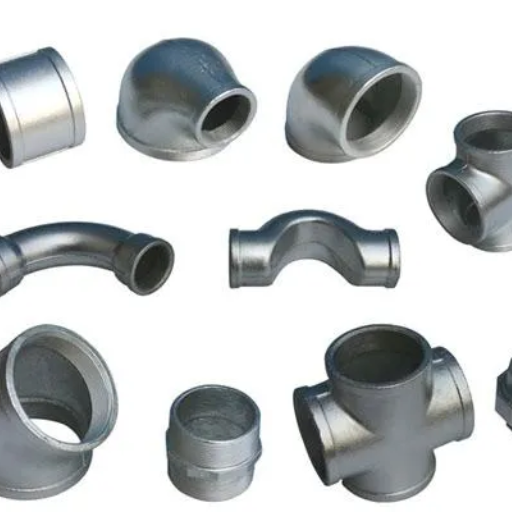
The correct pipe and fitting must take three main considerations into account:
- Material Compatibility – Select materials that best fit the purpose of the application. For example, in high-pressure or high-temperature systems, metal pipes such as steel or copper would be best suited, while in low-pressure applications with corrosion, PVC or plastic pipes work best.
- Size and Pressure Rating – Check that the pipe and fitting parameters, for example, the diameter and pressure capacity, are appropriate for the system. Any failure to meet these requirements could cause severe damage to the entire system.
- Application Needs – A specific environment and function have to be planned out. For example, plumbing systems require non-corrosive materials, industrial systems need materials that can withstand high amounts of force and heat.
Cross-matching these elements with your system’s priorities will make sure that the performance is efficient and enduring. Industry standards and/or availing the services of a qualified professional can assist your decision-making process.
Factors to Consider When Choosing Pipe Types
Using industry data to determine the selection of the appropriate type of pipe can greatly enhance productivity while optimizing safety and costs. Presented below are important considerations with additional explanations and insights from the industry:
- Material Composition
Different types of materials have a unique set of challenges and benefits associated with them. Such as, PVC and CPVC pipes are inexpensive, lightweight, and resistant to corrosion, making them suitable for non-pressurized water systems. In addition, galvanized steel and ductile iron pipes are exceedingly strong and durable, they are used in heavy-duty, industrial-grade, or high-pressure applications. Also, copper pipes are commonly used in systems for heating due to their thermal conductivity, as pointed out by the Energy Department of the United States.
- Environmental Considerations
The environment greatly affects the external conditions a pipe is exposed to. For instance, freezing environments require a pipe that has a good range of flexibility, such as PEX piping, since the material can expand without fracturing. Moreover, in extremely corrosive places, steel or HDPE pipes are most preferred because they are less susceptible to chemical and environmental wear.
- Load Capacity and Diameter
Sizing a system accurately is very beneficial in terms of practicality, efficiency, and ease of use. Studies show a devastating impact of under-sizing pipes, such as causing pressure losses, while the opposite, oversized pipes, increase expenditure without any real utility. The features of a pipe are its diameter and wall thickness, both heavily influenced by the flow rate and pressure of the pipe. Following the foundation of hydraulic engineering, calculations of flow rate are the balance point of achieving optimal balance.
- Regulatory Compliance and Safety Standards
Adhering to organizational frameworks like ASTM International or ASME guarantees safety, compliance, and durability. Pipes are stamped, and certificates are issued that confirm that they meet the certificates of compliance. Such compliance may pertain to subsections within industries like potable water compliance or the chemical-resistant industry.
- Lifespan and Maintenance Requirements
Performance in the long term is largely determined by the service life of the material. For instance, PEX pipes offer a life expectancy of around 50 years, whereas strengthened steel pipes surpass that figure. Moreover, they are easier to maintain, leading to lower overall costs. Increase the durability of the material, and that will further decrease maintenance needs.
Balanced functionality and environmental consideration factors sustain performance and reliability. These insights, based on industry developments and guidelines, offer a holistic basis for determining best-fit pipe types for any application.
Selecting the Appropriate Type of Fitting
Selecting the correct type of fitting is key for the optimal efficiency and safety of piping systems. Fittings are made up of steel, copper, brass, or PVC. Each material serves different applications in piping systems and offers unique advantages. Steel fittings, for example, provide exceptional strength and are widely used in industrial settings. S tend to be more durable under high-pressure environments, while PVC fittings are better suited for plumbing and irrigation systems since they are lightweight and resistant to corrosion.
According to the industry data, over 50% of Canada’s commercial plumbing projects use push-to-connect fittings because of their ease of use, time efficiency, and installation for cost of installation. This greatly reduces the need for soldering and welding and therefore decreases the operational labor costs. Additionally, as always, threaded fittings carry the standard as the go-to fittings in places that require robust, leak-proof connections next to pressure-resistant environments.
It is equally important to consider temperature, pressure rating, and chemical compatibility when selecting fittings. For example, brass fittings work well in high-temperature conditions, while stainless steel fittings are better at withstanding corrosive materials found in chemical processing systems. By analyzing application requirements and consulting technical specifications, the right fittings can be chosen and incorporated to maximize system efficiency.
Matching Pipes of Different Sizes: Tips and Tricks
Achieving a seamless connection between pipes requires different couplers or steps. Therefore, I always use the proper adapters and reducers designed for the job at hand. To confirm they are compatible, I check both pipes to measure the inner and outer diameters. In addition, I choose fittings such as couplings or bushings that ensure a tight seal and prevent leaks. Within my process, I always check the material compatibility, pressure ratings to ensure system integrity is not compromised. Following these steps makes the task simple while removing the possibility of errors.
What Materials Are Used for Pipe and Fittings?
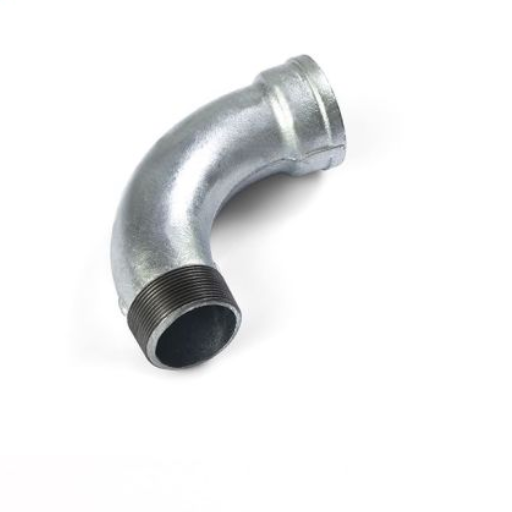
Pipes and fittings are usually constructed from parts that have a long life, compatibility, and suitability for particular applications. The most frequently used materials include:
- PVC (Polyvinyl Chloride) is light, does not corrode, as well as being cheap. It is ideal for plumbing and drainage systems.
- Copper is very strong, resistant to heat, and is used in water supply lines as well as in HVAC systems.
- Stainless Steel is very durable, does not rust or get corroded by chemicals. It is used in construction and in high industrial applications.
- Cast Iron Sewage and drainage systems require strength and a material that will last for a long time. Cast iron is the answer.
- Cross-linked Polyethylene or PEX for short: PEX does not lose its shape when bent and is therefore easy to install. PEX is also popular for residential water supply systems because it is temperature-resistant.
These materials are selected depending on the attributes of the system, like pressure, temperature, and conditions of exposure.
Common Materials Used for Pipes in Various Applications
Below is a comprehensive summary of commonly employed types of pipes, their physical characteristics, uses, and relevant information.
- Copper:
- Properties: Resilient, does not corrode easily, and withstands high temperature and pressure.
- Applications: Used in heating systems, portable water systems, and refrigeration.
- Key Data: Has a melting point of 1,984°F with a tensile strength of 32,000 psi.
- PVC (Polyvinyl Chloride):
- Properties: Reasonably priced, lightweight, and resistant to corrosion. Quite simple to install and cut into various shapes.
- Applications: Found in drainage, irrigation systems, and for supplying cold water.
- Key Data: Endures 140°F, but no higher; possesses a tensile strength of around 7,000 psi.
- CPVC (Chlorinated Polyvinyl Chloride):
- Properties: More expensive than PVC. Can tolerate higher temperatures. Also does well in chlorinated water.
- Applications: Used everywhere hot and cold water needs to be distributed in buildings, residences, and commercial offices.
- Key Data: Endures 200°F, but no higher; observes a tensile strength of 6,000 to 7,000 psi.
- Stainless Steel:
- Properties: Good corrosion resistance as well as suitability for high-pressure and high-temperature applications.
- Applications: Industrial systems, marine applications, and even potable water pipelines.
- Key Data: Common values for tensile strength are approximately 80,000 psi, but they vary by grade.
- Ductile Iron:
- Properties: Exhibit high strength and ductility along with outstanding impact and wear resistance.
- Applications: Used in municipal water and sewage systems.
- Key Data: Around 60,000 psi is typical for these materials.
- PEX (Cross-linked Polyethylene):
- Properties: Scaling and chlorine are resistant. Easy to Install, Flexible, and Durable.
- Applications: Residential water supply systems, radiant heating systems, and snow melting applications.
- Key Data: Tendon strength 2,000 to 3,000 psi. Temperature up to 200°F.
- HDPE (High-Density Polyethylene):
- Properties: Flexible, light-weight, and works well against chemicals, UV radiation.
- Applications: Gas distribution, potable water systems, and sewage pipelines.
- Key Data: Tendon strength approximately 3,200 to 5,000 psi and temperature range of -40°F to 140°F, stationary.
- Cast Iron:
- Properties: Tactics such as Metal Casting provide strong, heavy, and durable processes with great resistance to abrasion.
- Applications: Commonly used for sewers and drainage systems for city infrastructure.
- Key Data: Depending on the grade, maintains sustained tension of up to 20,000 to 60,000 psi.
These materials are chosen due to the particular requirements of the pipe system, optimizing efficiency, safety, and durability for different applications.
Factors to Consider When Choosing Materials
Choosing the materials for pipe fittings requires lasting effect consideration as an important factor. Thebes of pipes and pipe fittings are subject to very harsh settings such as extremely corrosive surroundings, high temperatures, and a lot of chemicals that these pipes withstand, and due to those very specific reasons, material selection ensures the best performance. Realizing how particular materials are designed and their practicality in specific jobs can greatly improve the functionality of the whole pipe system while increasing safety and ultimately lowering emissions regulations and downtime for maintenance and repairs.
Comparing Durability and Compatibility of Different Materials
It is important to look at how pipe fitting materials will be used while judging their durability and compatibility. As an example, stainless steel has great value in the chemical processing and power generation industries because it is incredibly corrosion resistant and can withstand very high temperatures. Industry data also notes that stainless steel has a tensile strength close to 80,000 psi, suggesting once again how capable it is in high-pressure situations.
On the other side, PVC(polyvinyl chloride) is a material that is extremely popular for use in drainage and plumbing systems. This is due to its lightweight nature and low cost, as well as its ability to resist chemical attacks. PVC does not have an easy time with higher temperatures, though, as its heat tolerance is capped at a little over 140°F.
Copper is famous for its thermal conductivity, which makes it ideal for HVAC and heat exchange systems. Its naturally occurring antimicrobial qualities make it favorable for use in potable water systems, allowing the water to remain clean and safe for the long term. As an antibacterial device, though, copper fittings can suffer from corrosion when surrounded by acidic materials, which could, in turn, reduce their lifespan under certain conditions.
Through a comparison of the above materials, stakeholders can pinpoint the most suitable option tailored to their particular environmental and operational requirements while achieving an optimal balance between durability, expense, and application suitability.
What Are the Applications of Couplings and Fittings?
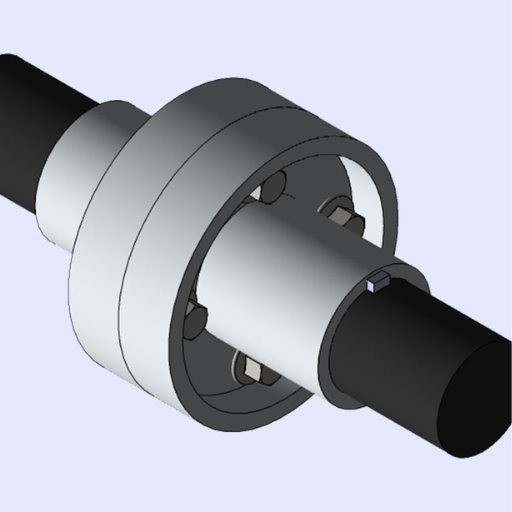
In many industries, such as plumbing, manufacturing, HVAC, and beyond, couplings and fittings serve as vital parts that connect, stretch, or seal pipes and tubes. Sealers and Couplings are used for the transportation of liquids, gases, and materials. In homes, couplings attach pipes in plumbing systems, while fittings connect gas lines. Couplings and Fittings also serve an enormous purpose in industrial fluid systems. These parts are adaptable for flow control, system breakage, avoidance of leaks, and diverse environments.
Where Are Couplings Used in Piping Systems?
Because of their adaptability and effectiveness, couplings are very important in many different industrial, commercial, and residential piping systems. In addition, they are critical components in the water distribution network systems as they help connect water supply pipes for drinking water in a safe and reliable manner. Couplings, for instance, in urban water supply networks, can also be used to enable quick assembly and fast repair, which reduces maintenance downtime.
In industrial settings, couplings are commonly used in the transport of fluids under high pressure and dangerous chemicals. For example, in the oil and gas industry, couplings are capable of connecting sections of pipelines transporting crude oil or natural gas, with some designs enduring over 10,000 psi. Furthermore, in chemical processing plants, specific couplings made out of stainless steel or polymer, which are resistant to corrosion, are used to protect from aggressive chemical substances.
They are particularly essential to the HVAC industry in the joining of ducts, pipes for refrigerants, and water in the units for heating and cooling. Here, flexible couplings can be repositioned for thermal expansion of the pipes and vibrations of the pumps, which improves the durability of the system. Finally, in manufacturing, couplings are vital parts of the compressed air-powered systems for Pneumatic tools and systems. In Pneumatic systems, couplings optimize the air flow between different components of the system, providing the required efficiency in automated equipment and assembly lines. Their resilient nature makes them highly useful in a wide variety of fields, from big businesses to smaller local operations.
Common Applications of Different Types of Pipe Fittings
In multiple industries, pipe fittings are very useful since they aid with the transportation of fluids, control of flow, and connection within a piping system. Some common uses of different kinds of pipe fittings, along with their important details, are listed below:
- Elbows
Use Elbow Fittings To Change The Flow Direction Of Pipes For 90 or 45 Degrees. They Are Important In Plumbing, Heating, And Industrial Pipeline To Work Alongside Space Constraints. Elbows Give The Ability For Pipelines To Pass Through Complex Terrains In the Oil And Gas Domains.
- Tees and Crosses
Tee Cross Pipe And Cross Fittings Help In Multiple Pipe Lines Joining Or Branching Off. In Residential Water Plumbing, They Are Particularly Important, However,r They Are Also Used In Chemical Industry. As An Example Of Agricultural Use, Polypropylene Tee Fittings Are Highly Resistant to Chemicals And UV Decomposition And Are Therefore Used In Irrigation Systems.
- Couplings and Unions
These fittings come in handy when a secure connection between two pipes is required, as with maintenance needs like changing or modifying the system. Couplings are standard in giving out potable water as they are simple to set up and reliable, and Unions are often used in compressed air systems.
- Reducers
Reducers assist in transitioning pipe sizes, controlling pressure, and flow within a system. In hydraulic applications, such as high-performance fire sprinkler systems where flow rate management is essential, these components serve a vital role. The use of concentric reducers, in particular, guarantees minimum turbulence and maximum efficiency within the system.
- Flanges
As with most socketed joints, flange fittings suffer less stress compared to butt joints thus providing a dependable, easily detachable connection. This feature makes them essential in wastewater treatment plants and other petrochemical systems. They withstand large pipe diameters while withstanding high pressure and temperature, using stainless steel and carbon steel for added strength.
- Caps and Plugs
Caps and plugs are used to seal the ends of pipes in systems under testing or for lines that are not in service. Such fittings are employed in temporary water supply lines, gas pipelines, and air-conditioning units to prevent leaks and contamination.
Through adaptations of materials and designs, contemporary pipe fittings meet the requirements of various industries with accuracy and strength. Their integration provides functional dependability, underscoring their essential value in global infrastructure and industrial undertakings.
Understanding the Role of Tee Fittings and Cross Fittings
Tee fittings and cross fittings are essential parts of plumbing and industrial piping systems as they help in changing the direction and distributing fluids or gases. The letter “T” is the shape of a tee fitting, and it connects three sections of a pipe, which allows branch flow or merging flow through it. Configurations include tees that are equal, also known as a uniform connection, and reducing tees, meant for pipes of various diameters.
These cross-fitting, also known as crosse, have a four-way connection. These fittings are used with more complicated pipeline systems where several directions of flow must converge at one point. They are commonly found in chemical processes, water systems, and HVAC systems as they guarantee balanced flow distribution.
Recent advances in materials science have also enabled the creation of stronger and corrosion-resistant cross fittings out of high-grade metals, plastics, and alloys. For example, research shows the tensile strength of stainless steel tee fittings is greater than 50,000 psi, which is ideal for applications involving high pressure. Moreover, plastic replicas made out of polypropylene or PVC are more economical and less heavy for low-pressure systems.
These fittings face rigorous quality evaluation processes to ensure performance and reliability. For instance, the ASME and ASTM specifications- those/accompanying manufacturing and test domain prerequisites- are guidelines of whether these fittings endure varying temperature challenges, extreme pressures, and corrosive surroundings. These standards are critical to operational safety and enduring strength, furthering their pipeline systems throughout the sectors.
Reference Sources
- Replacing Metal Parts with Resin in Pipe Installations and Gas Equipment1:
- Key Findings: This study explores the transition from metal to resin in gas distribution systems, focusing on couplers and valves. Polyethylene and other resins are replacing metals due to their resistance to corrosion and earthquakes. The study highlights the use of water-hammer and stress rupture tests to evaluate resin’s suitability as a metal substitute.
- Methodology: The research involved comparative testing of metal and resin components under high-temperature and high-pressure conditions to assess durability and performance.
- Asset Administration Shell Generation and Usage for Digital Twins: A Case Study for Non-destructive Testing2:
- Key Findings: While not directly about couplings and fittings, this study discusses the use of digital twins in manufacturing, including pipe systems. It emphasizes the importance of interoperability and standardized digital representations for components like couplings.
- Methodology: The study implemented digital twin technologies in a real manufacturing environment, using tools like Eclipse BaSyx and Admin Shell IO to create and manage digital representations of components.
- Shape Memory Alloy Tube and Pipe Couplings3:
- Key Findings: This chapter examines the application of shape memory alloys (SMAs) in pipe couplings, offering a technical solution to fitting challenges. SMAs provide flexibility and adaptability in joining pipes, especially in dynamic environments.
- Methodology: The research details the working principles of SMA couplings and their application in various pipe systems, supported by experimental data.
Frequently Asked Questions (FAQs)
Q: Are couplings and fittings the same in pipe systems?
A: No, couplings and fittings are not the same. A coupling is used to connect two pieces of pipe together, while fittings are used to connect or transition between different sizes or types of pipes.
Q: What is a pipe union?
A: A pipe union is a specific type of fitting that allows for easy disconnection of two pieces of pipe. It is commonly used in applications where regular maintenance is required.
Q: Can you explain the difference between coupling and nipple fittings?
A: Coupling is used to connect two pieces of pipe together, whereas nipple fittings are short lengths of pipe with male threads on both ends, used to connect two female threaded fittings.
Q: When should I use flange fittings?
A: Flange fittings are typically used when a strong, leak-proof connection is required between larger pipe sections. They provide a sturdy connection for pipe runs that may need to be disassembled in the future.
Q: Are there different types of couplings available?
A: Yes, there are different types of couplings available, including compression fittings, which are used to connect two pieces of pipe together without threading.
Q: What types of fittings can be used for PVC pipes?
A: Fittings for PVC include slip fittings, threaded fittings, and flange fittings, which are specifically designed to connect PVC pipes securely.
Q: How do I choose the right coupling pipe fitting for my project?
A: Choosing the right coupling pipe fitting depends on the type and size of the pipes you are working with, as well as the specific application requirements such as pressure and temperature ratings.
Q: What is the purpose of using a short piece of pipe?
A: A short piece of pipe, often referred to as a nipple fitting, is used to connect two fittings or pipes together, especially in tight spaces where a longer pipe may not fit.
Q: Can fittings be used to connect two pipes of different sizes?
A: Yes, fittings can be used to connect two pipes of different sizes, utilizing reducers or other types of fittings designed for that purpose.
Q: What are threaded pipe fittings, and how are they used?
A: Threaded pipe fittings are designed with threads on the inside or outside that allow them to screw onto the ends of pipes or other fittings, providing a secure connection that can be easily disassembled.

